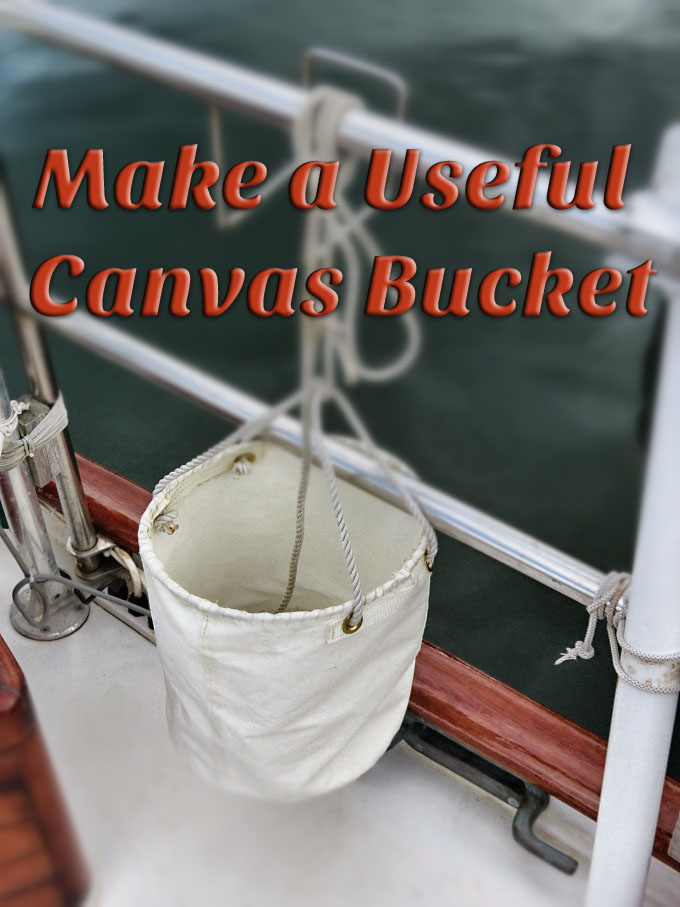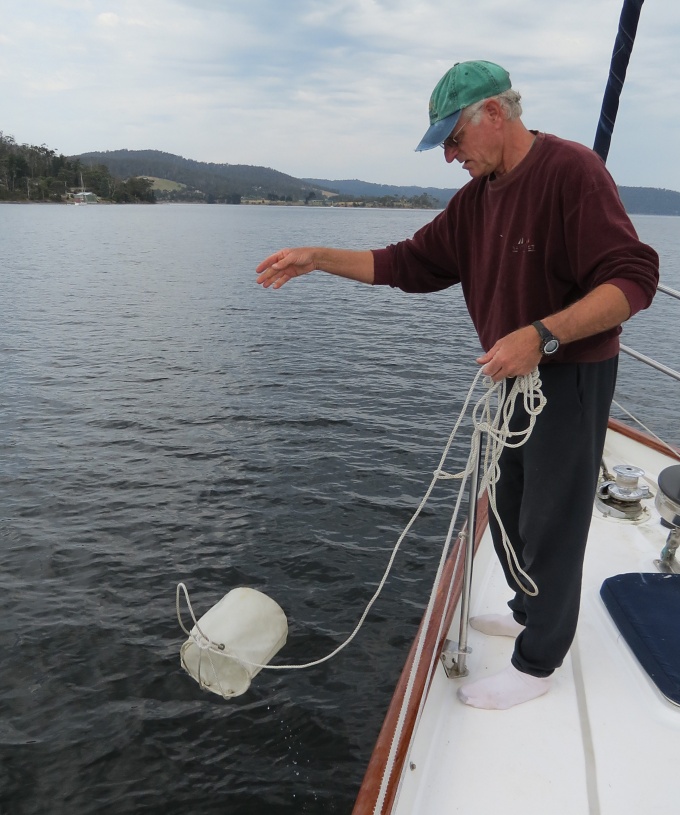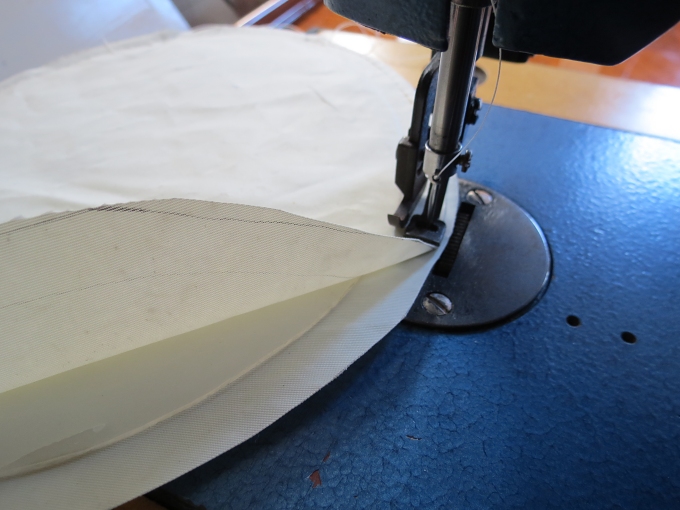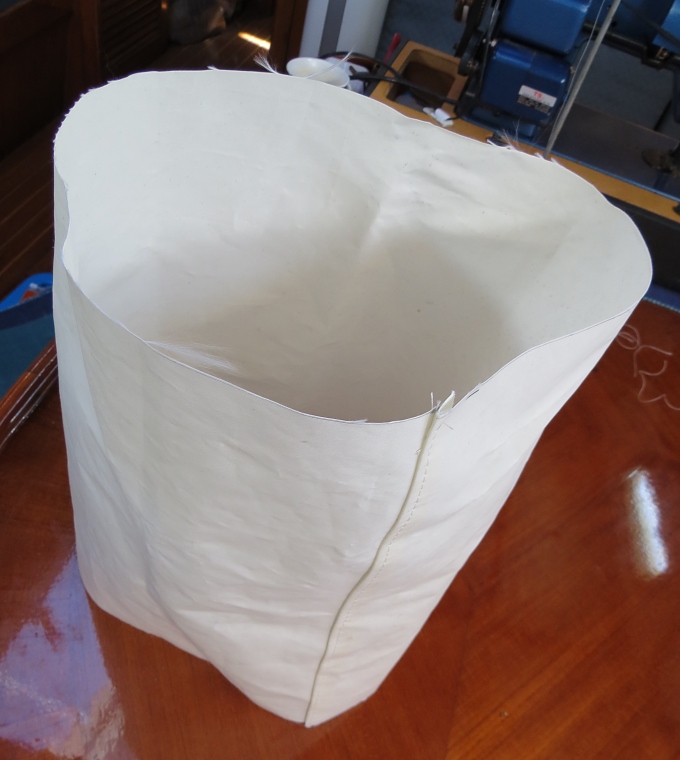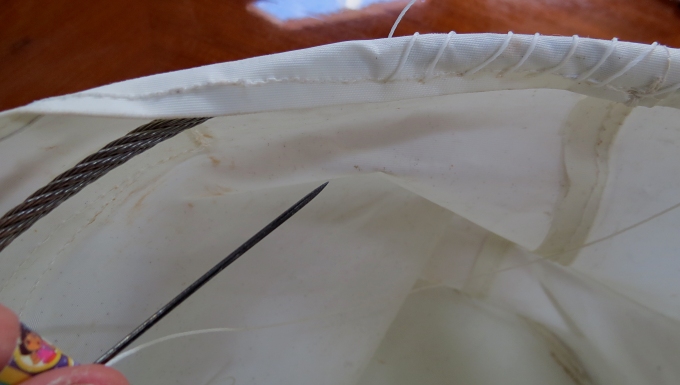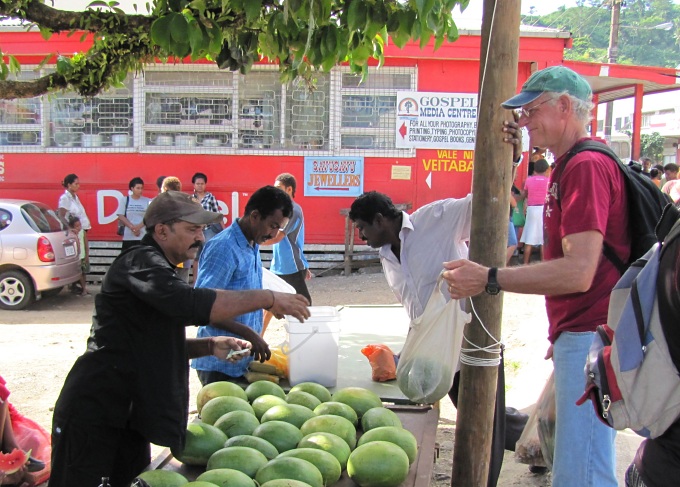Make a Useful Canvas Bucket
/
Call me a packrat, but I hate throwing anything away that could still have some use aboard. David uses old line to make ocean plait rugs. I use old jacklines to keep jerry jugs firmly in place on deck and also as hoists when making courtesy flags. So when it came time to buy a new mainsail, I couldn't just throw the old one away. Though the sail had seen several thousand miles and many years of use, it had some life left in it. I carefully cut out large useable chunks for future use and tucked them away for a rainy day project. Over the years, I've found lots of uses for used sail material beyond mending and patching working sails in a pinch.
The absolute best project, however, was a versatile canvas bucket. When we bought Nine of Cups, there was a canvas bucket aboard which we used regularly for washing decks and general clean-up. It was easy to toss overboard, fill with sea water and haul back aboard. The original one was getting old and lost more water than it held. David suggested that we could buy a new one or maybe I could sew a new one. It looked simple enough and I had the time, so I thought I'd give it a go. Whenever an existing pattern is available, the process is much easier.
There were a two things we didn't like about the existing bucket, so I decided I'd implement a couple of changes. First, it sometimes collapsed when we tossed it overboard to fill it with sea water and second, it was so lightweight, it sometime just skipped over the water and wouldn't fill at all. I decided if I could make the top rim and the bottom more rigid, it would have enough extra weight to sink below the surface while keeping the top open for easy filling without collapsing.
I cut a rectangular piece of sailcloth 3l.5” x 12”. To make the bottom rigid, I found the flat lid of an old plastic crate and using a pencil with a string attached, measured, marked and cut out an 11” diameter circle. I later thought that cutting out the bottom of an old plastic pail that had a crack in its side would have been just as easy.
I then traced the plastic circle onto sailcloth and cut out two slightly larger (1/2” all around) circles which would allow for a seam allowance and room to maneuver. I sewed the plastic disc between the two pieces to keep it in place.
The next step was to form a tube with the 31.5” rectangle and sew along the side. Though I have a heavy duty SailRite sewing machine, this project could be done successfully with a lightweight machine as well. Checking that all seams were facing out, I pinned the encapsulated disc to one end of the canvas tube. This is a tricky process because there seems to be too much material for the disc. I initially used four attachment spots and then spaced the pins so that the material was evenly distributed. I used a zipper foot, rather than a standard presser foot in order to sew as closely to the plastic disc as possible. It started to look like a bucket.
The top rim needed to be finished and it needed a handle, of course. I used two 6” strips cut from old 1” jackline webbing and sewed them on opposite sides of the buckets spaced about 1” from the top rim. This reinforcement would accommodate full buckets of water without the weight tearing out the sides of the bucket. I installed two brass grommets spaced 3” apart on each strip which would accommodate a rope handle. It was important to do this step before completing the rim to insure that I could get the fabric under the sewing machine needle.
In order to make the rim rigid, I employed a 31” piece of old 1/4” lifeline (any stainless wire, ~1/4” would work just as well) and hand stitched it inside the rim by folding the 1” of canvas I had allowed above the handle reinforcement strips over the wire.
I attached lengths of rope to each side of the bucket to act as handles and knotted them securely through the grommets. I later tied another piece of line connecting the handles so the bucket could easily be tied to the aft lifeline for convenient access and use. Without much effort and an investment of less than two hours, we had a new canvas bucket.
To see the original article in Ocean Navigator, click here.
| Days and Ways to Celebrate |
| A daily list of mostly obscure holidays and fun ways to celebrate them. |
| Zoo Lover's Day |
| The first zoo was in Egypt in ~3500BC. Find out what's new at your local zoo. |
| Vesahka (Buddha's Birthday) |
| Throughout the Buddhist world, people will celebrate Buddha's birthday today. Learn more about it and how to celebrate. |


